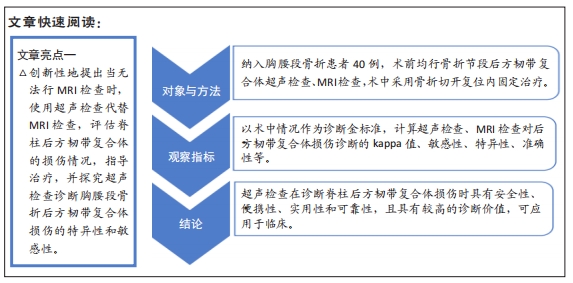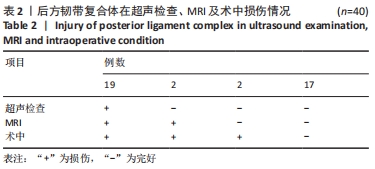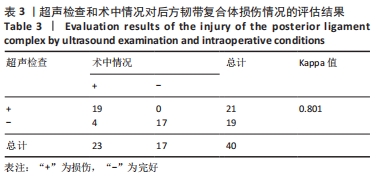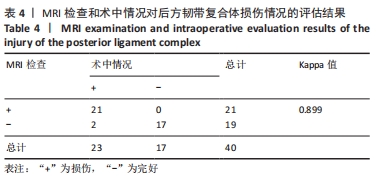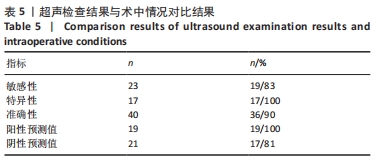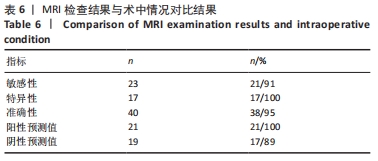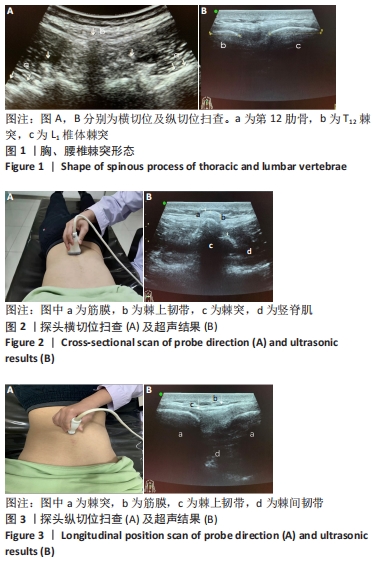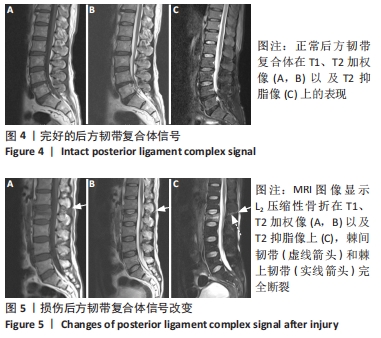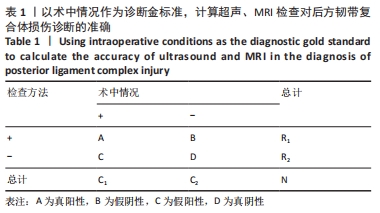[1] SETHI MK, SCHOENFELD AJ, BONO CM, et al. The evolution of thoracolumbar injury classification systems. Spine J. 2009;9:780-788.
[2] VACCARO AR, ZEILLER SC, HULBERT RJ, et al. The thoracolumbar injury severity score: A proposed treatment algorithm. J Spinal Disord Tech. 2005;18:209-215.
[3] PARK HJ, LEE SY, PARK NH, et al. Modified thoracolumbar injury classification and severity score (TLICS) and its clinical usefulness. Acta Radiol. 2016;57(1):74-81.
[4] PARK CJ, KIM SK, LEE TM, et al. Clinical relevance and validity of TLICS system for thoracolumbar spine injury. Sci Rep. 2020;10(1):19494.
[5] GANJEIFAR B, KEYKHOSRAVI E, BAHADORKHAN G, et al. Predictive Value of Computed Tomography Scan for Posterior Ligamentous Complex Injuries in Patients with Thoracolumbar Spinal Fractures. Arch Bone Jt Surg. 2019;7(4):321-324.
[6] MAHESWARAN A, AIYER SN, FAROUK O, et al. Assessment of Interobserver Variability for CT Scan-Based Evaluation of Posterior Ligament Complex Injury in Thoracolumbar Fractures: An International Multicenter Pilot Study. Global Spine J. 2020;10(2):118-129.
[7] MEHTA G, SHETTY UC, MEENA D, et al. Evaluation of Diagnostic Accuracy of Magnetic Resonance Imaging in Posterior Ligamentum Complex Injury of Thoracolumbar Spine. Asian Spine J. 2021;15(3): 333-339.
[8] ZHAO JW, LIUY, YIN RF, et al. Ultrasound assessment of injury to the posterior ligamentous complex in patients with mild thoracolumbar fractures. J Int Med Res. 2013;41:1252-1257.
[9] GANJEIFAR B, KEYKHOSRAVI E, BAHADORKHAN G, et al. Predictive Value of Computed Tomography Scan for Posterior Ligamentous Complex Injuries in Patients with Thoracolumbar Spinal Fractures. Arch Bone Jt Surg. 2019;7(4):321-324.
[10] CHEN JX, GOSWAMI A, XU DL, et al. The radiologic assessment of posterior ligamentous complex injury in patients with thoracolumbar fracture. Eur Spine J. 2017;26(5):1454-1462.
[11] PIZONES J, SÁNCHEZ-MARISCAL F, ZÚÑIGA L, et al. Prospective analysis of magnetic resonance imaging accuracy in diagnosing traumatic injuries of the posterior ligamentous complex of the thoracolumbarspine. Spine (Phila Pa 1976). 2013;38:745-751.
[12] MARONGIU G, CONGIA S, VERONA M, et al. The impact of magnetic resonance imaging in the diagnostic and classification process of osteoporotic vertebral fractures. Injury. 2018;49 Suppl 3:S26-S31.
[13] LI Z, GUAN M, SUN D, et al. A novel MRI- and CT-based scoring system to differentiate malignant from osteoporotic vertebral fractures in Chinese patients. BMC Musculoskelet Disord. 2018;19(1):406.
[14] OISHI Y, NAKAMURA E, MURASE M, et al. Lower lumbar osteoporotic vertebral fractures with neurological symptoms might have two different pathogeneses according to early magnetic resonance images. Acta Neurochir (Wien). 2019;161(10):2211-2222.
[15] KANEZAKI S, MIYAZAKI M, ISHIHARA T, et al. Magnetic resonance imaging evaluation of intervertebral disc injuries can predict kyphotic deformity after posterior fixation of unstable thoracolumbar spine injuries. Medicine (Baltimore). 2018;97(28):e11442.
[16] JO AS, WILSECK Z, MANGANARO MS, et al. Essentials of Spine Trauma Imaging: Radiographs, CT, and MRI. Semin Ultrasound CT MR. 2018; 39(6):532-550.
[17] KWON KY, PARK HJ, SHIN JS, et al. Another diagnostic tool in thoracolumbar posterior ligament complex injury: interspinous distance ratio. Eur Spine J. 2017;26(5):1447-1453.
[18] KHURANA B, PREVEDELLO LM, BONO CM, et al. CT for thoracic and lumbar spine fractures: Can CT findings accurately predict posterior ligament complex injury? Eur Spine J. 2018;27(12):3007-3015.
[19] MUELLER LA, DEGREIF J, SCHMIDT R, et al. Ultrasound-guided spinal fracture repositioning, ligamentotaxis, and remodeling after thoracolumbar burst fractures. Spine (Phila Pa 1976). 2006;31:E739-E746.
[20] LEE HM, KIM HS, KIM DJ, et al. Reliability of magnetic resonance imaging in detecting posterior ligament complex injury in thoracolumbar spinal fractures. Spine (Phila Pa 1976). 2000;25:2079-2084.
[21] VACCARO AR, RIHN JA, SARAVANJA D, et al. Injury of the posterior ligamentous complex of the thoracolumbar spine: A prospective evaluation of the diagnostic accuracy of magnetic resonance imaging. Spine (Phila Pa 1976). 2009;34:E841-E847.
[22] VACCARO AR, LEHMAN RA JR, HURLBERT RJ, et al. A new classification of thoracolumbar injuries: the importance of injury morphology, the integrity of the posterior ligamentous complex, and neurologic status. Spine (Phila Pa 1976). 2005;30:2325-2333.
[23] VON SCOTTI F, SCHRODER RJ, STREITPARTH F, et al. Ultrasound examination of the posterior ligament complex in thoracolumbar spinal fractures. Radiologe. 2010;50:1132,1134-1140.
[24] CROSBY CG, EVEN JL, SONG Y, et al. Diagnostic abilities of magnetic resonance imaging in traumatic injury to the posterior ligamentous complex: The effect of years in training. Spine J. 2011;11:747-753.
[25] RAASCK K, KHOURY J, AOUDE A, et al. The Effect of Thoracolumbar Pedicle Isthmus on Pedicle Screw Accuracy. Global Spine J. 2020;10(4): 393-398.
[26] LI Y, SHEN Z, HUANG M, et al. Stepwise resection of the posterior ligamentous complex for stability of a thoracolumbar compression fracture: An in vitro biomechanical investigation. Medicine (Baltimore). 2017;96(35):e7873.
[27] SPIEGL UJ, AHRBERG AB, ANEMÜLLER C, et al. Which anatomic structures are responsible for the reduction loss after hybrid stabilization of osteoporotic fractures of the thoracolumbar spine? BMC Musculoskelet Disord. 2020;21(1):54.
[28] MEINIG H, DÖFFERT J, LINZ N, et al. Sensitivity and specificity of ultrasound in spinal trauma in 29 consecutive patients. Eur Spine J. 2015;24(4):864-870.
[29] KIM HJ, KANG KT, MOON SH, et al. The quantitative assessment of risk factors to overstress at adjacent segments after lumbar fusion: removal of posterior ligaments and pedicle screws. Spine (Phila Pa 1976). 2011; 36(17):1367-1373.
[30] MEINIG H, DÖFFERT J, LINZ N, et al. Sensitivity and specificity of ultrasound in spinal trauma in 29 consecutive patients. Eur Spine J. 2015;24(4):864-870.
|
